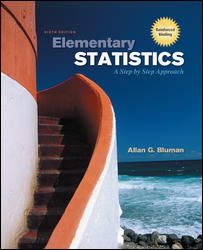
Elementary Statistics, Sixth Edition (Bluman)Chapter 11: Other Chi-Square TestsStatistics and Heredity An Austrian monk, Gregor Mendel (1822–1884) studied genetics, and his principles are the foundation for modern genetics. Mendel used his spare time to grow a variety of peas at the monastery. One of his many experiments involved crossbreeding peas that had smooth yellow seeds with peas that had wrinkled green seeds. He noticed that the results occurred with regularity. That is, some of the offspring had smooth yellow seeds, some had smooth green seeds, some had wrinkled yellow seeds, and some had wrinkled green seeds. Furthermore, after several experiments, the percentages of each type seemed to remain approximately the same. Mendel formulated his theory based on the assumption of dominant and recessive traits and tried to predict the results. He then crossbred his peas and examined 556 seeds over the next generation. Finally, he compared the actual results with the theoretical results to see if his theory was correct. To do this, he used a "simple" chi-square test, which is explained in this chapter. See Statistics Today—Revisited. |  |















